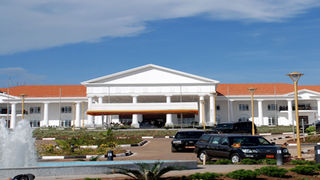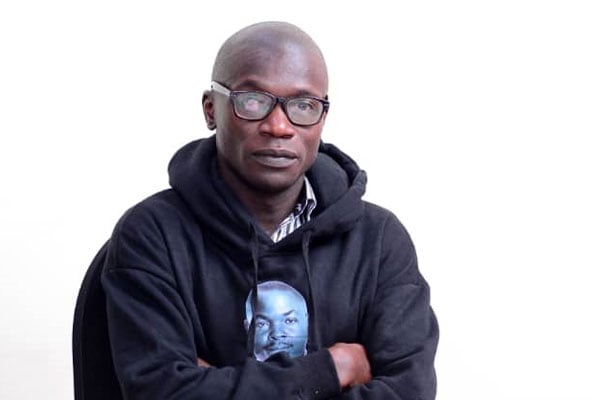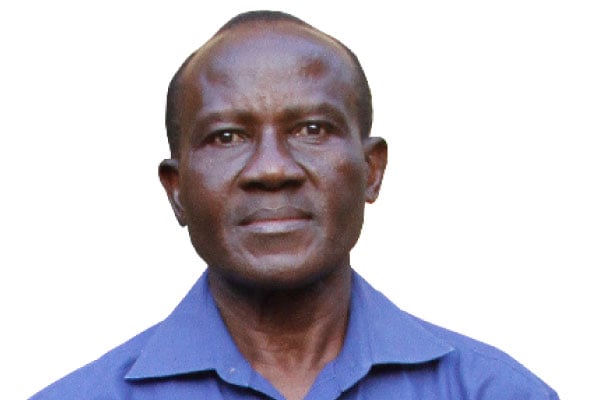
The presidential motorcade leaves State House Entebbe. PHOTO/FILE
|People & Power
Prime
Why State House budget has been swelling over the years
What you need to know:
- In 2013, the State House’s budget was at Shs65 billion yet 10 years later the budget has now shot up to Shs239 billion.
With key sectors like Agriculture facing budgetary cuts in the next financial year, Opposition Members of Parliaments (MP) had no kind words for Shs239 billion being allocated to the State House that included Shs350 million to buy clothes for President Museveni.
In the financial year 2012/2013, the Auditor General’s report showed that though State House had an approved budget of Shs64.8b, the actual releases totalled Shs173.5b. The Auditor General said this represented a 173 percent, or Shs108.6b, budget overrun financed by supplementary funding, which was above the original approved budget.
But the latest outcry over State House budget allocations comes after data retrieved from supplementary budget apportionments between 2016/2017 and 2022/23 revealed the State House spends roughly Shs2.8 billion daily.
Yet President Museveni’s aides, just like before, have been quick to defend the humongous budget, saying State House deserves the huge sums because it’s big.
“State House is a full government entity (vote) with a structure fully approved by the Ministry of Public Service. Its work force is composed of both support staff and regular officers at various levels,” Dr Chris Baryomunsi, the minister of Information and Communications Technology and National Guidance says, adding that this staff provides the necessary logistical and technical support for the efficient operations of the presidency.
“The State House in turn provides the necessary facilitation for the staff to carry their responsibilities effectively. This mandate informs the budgetary allocations across the various items,” he adds.

ICT Minister Chris Baryomunsi.
But a critical look into how State House operates showcases how it has increasingly become another centre of service delivery in the process of duplicating roles of government and, in worst-case scenarios, rendering regular government entities redundant.
Poverty alleviation
When Mr Museveni’s National Resistance Movement (NRM) wrested power from Gen Tito Okello Lutwa 37 years ago, it pitched poverty as one of the things it was going to fight tooth and nail to eradicate because they said Uganda’s economy had collapsed following years of misrule by previous regimes.
First, Museveni’s government embarked on an ambitious economic plan, labelled the Economic Recovery Programme (ERP), with the support of the International Monetary Fund (IMF), the World Bank and other donors.
In the 1990s, with poverty still prevalent, poverty alleviation programmes such as Entandikwa (initial capital), Poverty Alleviation Programme (PAP), and the Poverty Eradication Action Plan (PEAP), were rolled out. As those programmes failed to combat poverty, Museveni instituted the Poverty Alleviation Department (PAD) at State House.
The role of PAD, according to State House records, was to address wealth creation at the household level. Under Museveni’s guidance, State House says, PAD developed the Presidential Initiative against Hunger and Poverty to reflect his vision in fighting hunger while assisting homesteads to generate adequate incomes.
“PAD has recorded tremendous success thus far. There are more than 19 model parishes being run under the PAD programme, including Ruharo model parish in Bushenyi, Kasokwe Model Parish in Kaliro, Lwabenge in Masaka, Kikoni in Ntungamo, Busiita in Sironko, Kyanamukaka in Masaka, Sheme in Bushenyi, Bwera in Kamwenge, Petta in Tororo, Nakyesanja in Mpigi, Rwenganju in Kabarole, Mbulamuti in Kamuli, Mwanyagiri in Mukono, Rwentondo in Rukungiri, Kisozi in Mpigi, Mangho in Mbale, Mucuumi in Kitgum, Syanyonga in Busia and Buwemba in Masaka,” Museveni said in his 2021 presidential manifesto.
A year after Museveni formed PAD, Parliament enacted the National Agriculture Advisory Services (Naads) Act.

President Museveni visits a farm run by a Naads beneficiary in Kabarole District in 2010.
Just like PAD, Naads, which is one of the statutory semi-autonomous entities in the Ministry of Agriculture, Animal Industry and Fisheries, was established to facilitate efficient delivery of agricultural advisory services that would in turn lead to heightened production.
Though Museveni has been quick to praise State House’s PAD, he has no kind words for Naads to the extent that he temporarily stopped its funding in 2010 after complaints emerged that corruption had eaten it to the marrow.
“Those who have not yet got Naads money should not worry. The programme is not ending tomorrow. I will make changes to ensure funds reach as many farmers as possible,” Museveni said in 2010 as he was monitoring his prosperity-for-all manifesto. “I have told them, hold on, don’t distribute it. Let me go around the country. When I come back, I will tell you how to use it.”
Naads is still running, together with programmes such as Operation Wealth Creation headed by Museveni’s brother Gen Caleb Akandwanaho, alias Salim Saleh.
Land grabbing
Over the years, there has been an increase in cases of land grabbing, with blame being apportioned to the development of industrial-scale agriculture projects to supply global commodity markets which in turn deprives local communities of access to natural resources, aggravating rural poverty and the risk of food crises.
To tackle land grabbing, institutions such as village courts, police, the Office of the Director of Public Prosecutions (ODPP) and the Judiciary – which has a fully-fledged High Court Division – were put in place.
In spite of having all those institutions, in the early 2000s, Museveni went ahead to form the State House Land Department headed by Gertrude Njuba, who is in charge of Museveni’s welfare during the guerrilla war in the Luweero jungles.
In instituting the State House Land Department, Museveni said it was a constitutional obligation to protect the rights of peasants who are increasingly facing evictions from their land. Land evictions are still rampant with the State House Land Department looking on helplessly.
The reason as to why Museveni keeps on putting in place desks at State House to supervise other official structures, according to some analysts, is to have control.
“You will find that most people in State House, he has personally known them for years. So, it’s about him wanting to control everything in the country,” Yusuf Serunkuma, a social- political commentator based at Makerere University, says.

Members of the State House Land Department conduct public hearings in Luweero District in 2022. PHOTO/ DAN WANDERA
Museveni wasn’t about to stop relying on parallel institutions to stop land grabbing. In March 2013, he came up with another land committee to apparently relocate illegally evicted people.
The committee was headed by then junior Lands minister Aidah Nantaba and included former Wakiso Woman MP Rosemary Sseninde (now director of mobilisation and cardre identification in NRM), and Deborah Asasira from State House.
In addition, Museveni formed the Land Protection Squad headed by then Maj Jacob Asiimwe, whose role too is to protect people under threat of eviction.
Though such units have been created, the budget for the Ministry of Lands, Housing and Urban Development, which has recently taken a lead role in fighting land evictions, has continued to shrink, prompting line minister Judith Nabakooba to air out her misgivings.
“The overall ministry budget has declined by 52 per cent, with the largest cut of 64 percent on the non-wage. With the above cut, the subventions budget was reduced to 20 percent as per communication from the Ministry of Finance,” Nabakooba said on May 17 at the Uganda Media Centre, adding that staffing in land zonal offices is at 45 percent, which she said is low to meet the workload of processing 200,000 titles per year.
Investment
Five years after Museveni clinched power, his regime formed the Uganda Investment Authority (UIA), which is mandated to initiate and support measures that enhance investment in Uganda and advise government on appropriate policies conducive to investment promotion and growth.
Over the years, UIA has claimed to develop 27 industrial and business parks around the country in an effort to create jobs, ease accessibility of land for investments, introduce new research, technologies and skills development as well as boost Uganda’s exports and, therefore, increase Uganda’s revenue base.

President Museveni interacts with a factory worker at Namanve Industrial Park in 2019. PHOTO/PPU
Inter-alia UIA is charged with establishing a Science, Technology, Engineering and Innovation (STEI) park, and business incubator in each of the four regional cities of Arua, Gulu, Mbale, and Mbarara, and five strategic cities of Fort Portal, Hoima, Jinja, Nakasongola and Moroto as well as in Kampala Capital City.
Yet in 2020, Museveni set up what’s now known as the Presidential Industrial Hubs, headed by Raymond Kamugisha. Just like UIA, State House officials have said the role of these industrial hubs that are scattered across the country is to stem unemployment among young people.
“It’s an intervention, like other interventions the President has put in place to try and curb challenges of poverty and youth inclusion, especially in the money economy,” Kamugisha told the State House-run Government Citizen Interaction Centre (GCIC).
Corruption
Even in his attempts to fight corruption, Museveni has attempted to rely more on certain ad-hoc State House structures. Constitutionally, the Inspector General of Government (IGG) is tasked with eliminating corruption, abuse of authority and public office.
The Office of the Director of Public Prosecutions also has an anti-corruption department that specialises in prosecuting corruption-related offences. Despite the wide role that the IGG has, the office has been hamstrung by underfunding, and understaffing, among others.
But Museveni, in a bid to fight corruption, has come up with his own State House office. In 2011, Museveni formed the State House Health Monitoring Unit (HMU) headed by Dr Dian Atwine. The role of the HMU, according to State House, is to support an efficient and accessible health system that works for all.
Despite Atwine’s aggressive push for change, including raiding public health facilities, medical services in the country continued to deteriorate and in 2016 Museveni promoted her to be the Permanent Secretary, Ministry of Health. Once Atwine walked, the HMU lost steam.
Museveni wasn’t done. In 2019, he created the State House Anti-Corruption Unit, giving it to his former personal assistant Edith Nakalema to head.
In creating the State House Anti-Corruption Unit, Museveni had no kind words for the IGG’s office.
“When people start complaining about a watchman, then you have to hire another watchman to watch over that watchman and that is why I started and set up units in the President’s office to watch over the IGG,” Museveni said.
Despite forging all these offices, corruption in Uganda has remained on the upward spiral with the IGG revealing that Uganda loses at least Shs9 trillion to corruption pipes present in both the private and public institutions every year. Transparency International has put Uganda as the fourth most corrupt country in the East African region.

A team from the State House Anti-Corruption Unit tour a contested piece of land in Kyambogo, Kampala, in 2021. PHOTO/ABUBAKER LUBOWA
Museveni’s response has been to create another anti-corruption office he has named the State House Investors Protectorate Unit headed by Nakalema who had been appointed senior advisor-anti-corruption after being relieved of her job as the head of the State House Anti-Corruption Unit.
“I am using this Labour Day to tell everybody that we are going to have a big fight. I am going to set up another small unit in my office where the investors can ring directly if anybody asks them for a bribe or delays decisions,” Museveni said before creating the State House Investors Protectorate Unit.
The duplication of roles, according to some, is an attempt to get people jobs in a country that is struggling with high unemployment levels.
“I think you have to factor that private sector can’t take in all of these people. So, the President is now being creative by starting all these desks in State House. Of course, it’s dangerous because it’s the taxpayer who continues to pay the price because all these people have to be paid allowances and salaries,” says Mwambutsya Ndebesa, a senior lecturer at Makerere University College of Humanities and Social Sciences.
View ... Being creative
"I think you have factor in that private sector can’t take in all of these people. So, the President is now being creative by starting all these desks in State House. Of course, it’s dangerous because it’s the taxpayer who continues to pay the price because all these people have to be paid allowances and salaries,’’ Mwam-butsya Ndebesa, a senior lecturer at Makerere University.

Mr Ndebesa is a lecturer in Makerere University. [email protected]





